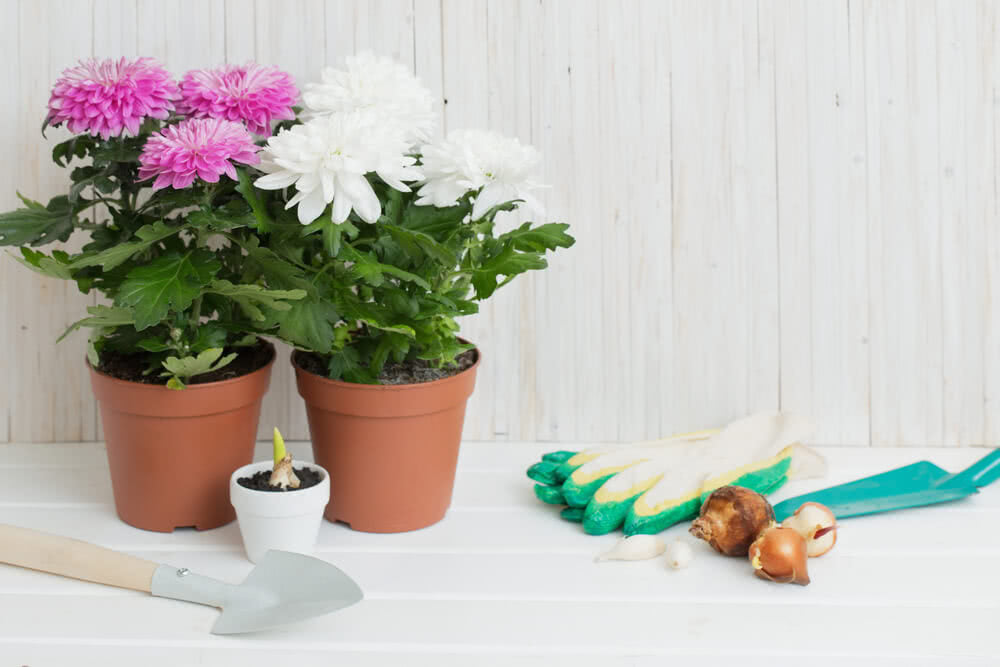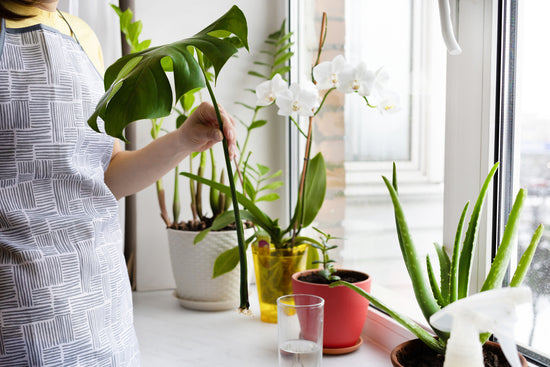Is your garden Winter ready?
Chrysanthemum is also known as ‘Glory of the east’. It is one of the most widely cultivated garden flowers & ranks probably next to Rose in popularity. There is hardly any other garden flower which has such a diverse and beautiful range of color shades, widely different flower shapes, & height ranges as chrysanthemum.
Know about Growing Roses - Introduction to the world of Roses

A show stopper indeed, Chrysanthemums are available in a wide variety that is distinguished on the basis of height, color, size, bloom time, and type. Some of the most popular types are Single, Decorative, Cushion, Anemone, Pompon, Quill, Spider, Spoon.
Buy Chrysanthemum seeds online

Propagation: The most common methods of propagation in chrysanthemum are by planting suckers & cuttings. Annual varieties are grown by seed sowing.
Botanical name: Chrysanthemum
Group: Hardy/half-hardy perennial
Height and spread: 10cm-1.5m (4in-5ft)
Aspect: Sunny
Hardiness: Tender
Planting & flowering schedule of Chrysanthemum:
- Suckers are planted in ‘February’ for flowering in ‘August-September’
- Stem cuttings are planted in ‘monsoon’ for flowering in ‘winter’
- For annual Chrysanthemum, Seed sowing is done during ‘June-July’ for rainy season flowering & seeds are sown in ‘September’ for winter flowering.

Read about Winter Flowers in India
How to grow Chrysanthemum?
Plant Chrysanthemum in a location that receives approximately 5-6 hours of sunlight daily.Since these beauties are susceptible to mildew, keep the plants dry with proper water drainage, air circulation, and see to it that you allow the morning sun to dry the dew on the leaves and stems. Avoid planting it in low-lying, moist areas with minimal air circulation. It is interesting that Chrysanthemum blooming responds to shortening days and longer nights, so avoid planting them near nighttime light sources like the streetlights.
Also read about Effect of light on Plant Growth

It is best when the soil for planting Chrysanthemum is fertile, well-drained, sandy or loamy. Its pH should be around 6.5. Note that Chrysanthemums can thrive on their own, but they will bestow you with great yield if they get ample of light and are frequently feed with a balanced fertilizer during the growing season.
Know about Soil pH level and its uses

Points to remember:
- Chrysanthemums are best planted in spring.
- They can be kept in containers indoors until conditions outside are suitable for transplanting.
- They grow best in nutrient-rich soil. It is recommended that fertilizer is applied just before planting Chrysanthemums.
- Post blooming mulch them with inches of straw to protect them from withering away in the cold.

Insect infestations and diseases that affect Chrysanthemums:
Aphids, leaf miners, Eelworms, Capsid bug, and Glasshouse, can damage the stock. White Rust and Powdery Mildew in dry conditions can also be very damaging and hard to control. Powdery mildew can be harmful. Where the weather is moist gray molds and other fungal rots can result in stunting and leaf markings.Know about Types of Insect Pests in your Garden

Mum Flower Fun-fact:
Chrysanthemum is the November birth flower. A red chrysanthemum denotes love and is used to express the same. A white chrysanthemum stands for innocence and purity. A yellow chrysanthemum means slighted love.

In both China and Japan chrysanthemums were regarded as a powerful emblem of youth. They believed that a petal of this flower when placed in the bottom of a glass of wine enhanced longevity.











